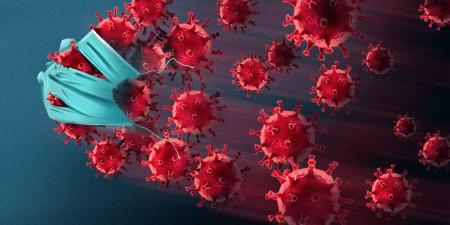Abstract
The Strategic National Stockpile (SNS) is a national system maintained by the US federal government to deliver medical supplies during emergencies. In the past, the SNS has been used to mitigate public health consequences of tragedies, such as Hurricane Katrina and Ebola outbreaks. However, challenges in maintaining and utilizing the SNS for patient safety are prevalent. This article canvasses ways in which the SNS is accessed and suggests needed changes in the wake of the COVID-19 pandemic.
Stockpile and Rapid Access
While the concept of stockpiling items in case of an emergency is not new, the Strategic National Stockpile (SNS) is a relatively modern endeavor. In 1999, the US Congress tasked the Centers for Disease Control and Prevention with developing a stockpile of medical supplies for rapid response in the event of a bioterrorism event, such as anthrax or tularemia.1 After the September 11th terrorist attacks, administration of the stockpile was transferred to the Department of Homeland Security before finally being placed under the Department of Health and Human Service’s Assistant Secretary for Preparedness and Response. Exact specifications of the SNS are not fully known to the public due to national security implications. It consists of multiple sites in secret locations containing large quantities of medications and medical supplies that can be mobilized and shipped across the country within 12 hours.2,3
Although bioterrorism threats have been rare since the inception of the SNS, the SNS has been utilized in other emergency situations. For example, during the H1N1 outbreak of 2009, the SNS deployed over 12.5 million antiviral regimens and nearly 20 million pieces of personal protective equipment (PPE).4 During the recovery after Hurricane Katrina, the SNS provided 3500 beds, 275 000 vaccines against communicable diseases, and 30 000 vials of insulin to Louisiana and Mississippi.5 According to a report from the Government Accountability Office, the SNS has received annual appropriations from Congress ranging from $522 million (FY 2013) to $845 million (FY 2022).6 The United States also maintains stockpiles for emergency purposes other than health care, such as the Strategic Petroleum Reserve, the Northeast Home Heating Oil Reserve, the National Defense Stockpile, and the National Plant Germplasm System.
Utilization
The appeal of the SNS is clear: rapid delivery of critical supplies in the event of an emergency can be the difference between a minor disturbance and a calamity. In the United States, having the federal government serve as the backstop for national security functions is also crucial in preventing a patchwork of varied state or local plans that may result in vulnerabilities or inequities. In practice, however, the SNS has faced difficulties in executing its core charge. For example, in the emergency response to Hurricane Katrina, one account describes how supplies from the SNS were delivered but went unused due to lack of jurisdictional clarity.7 During the early days and weeks of the COVID-19 pandemic, the SNS struggled to keep up with the demand for ventilators and PPE during the nationwide emergency, as the SNS was designed and implemented to address localized surge capacity.8
An illuminating example of the difficulties of the current national stockpile model is the response to the 2022 outbreak of mpox (formerly known as monkeypox), a viral disease that produces skin lesions and is related to the smallpox virus. In May 2022, the Biden administration stated that vaccines for smallpox were effective against mpox and available for deployment, if necessary.9 The 2 available vaccines effective against mpox in the SNS were JYNNEOS® and ACAM2000® (a third, unapproved vaccine, Aventis Pasteur Smallpox Vaccine, was also available in the event of a declared emergency if no doses of ACAM2000 were available). However, only JYNNEOS was US Food and Drug Administration (FDA) approved for mpox. ACAM2000 was not approved for mpox due to its more severe side effects, including pain, redness, and even myopericarditis and contraindications in infants and pregnant persons, but it was available via compassionate use programs.10,11 The SNS had large stores of ACAM2000, but not JYNNEOS. Reporting indicates that the SNS would require 132 million doses of JYNNEOS to maintain a full stock, which would support 66 million patients.12 Yet, during the mpox outbreak, the SNS only contained approximately 65 000 JYNNEOS doses due to 28 million doses having expired in 2017.13,14 Of the 65 000 doses, only 56 000 were made available for use, in part because JYNNEOS is also effective against smallpox, which is regarded as a national security threat and thus requires its own stockpile for response.13
Health care products, particularly medications and vaccines, are expensive and, as illustrated by the mpox outbreak, also expire, and thus require thoughtful investment in the SNS. Items purchased for the SNS are hopefully never used, yet it takes significant resources to maintain their value for emergency preparedness, given that the value of the product diminishes over time. The problem of resources for the SNS expands, however, when it is contextualized as a piece of the federal budget that supports many important programs in dire need of more funds. Fiscal limitations make the SNS an easy target for diverting funds when any other issue becomes a priority. For example, in 2021, $2 billion (more than double what had been requested for SNS in the most recent FY) was diverted away from the SNS to fund the response to the humanitarian crisis of unaccompanied minors at the southern border.12 It should be noted that many other factors can also play a role in the capability of the SNS to acquire additional supplies. For example, if a new or repurposed facility was established to provide surge production during an emergency, there can be significant regulatory oversight from entities, such as the FDA, that impact production.
A stockpile and manufacturers of the materials it contains are not necessarily responsive to a change in our understanding of and approach to combating health inequities.
As a society we are poor at anticipating the future and prioritizing future needs. The SNS was more prepared for an mpox outbreak in 2017, a time in which there were no such outbreaks but much more available vaccine. In terms of epidemiology, nothing radical occurred between 2017 and 2022 that would change our understanding of the risk of an mpox outbreak, but our risk tolerance, amidst competing priorities and limited resources, did change. Even when faced with an active mpox emergency, the SNS did not release all its mpox vaccine because of the ever-present, competing risk of a smallpox bioterrorist attack. This predictive risk assessment, wherein the larger catastrophic risk of death by smallpox was determined to be greater than the risk of disbursing the vaccine stockpile for rarely fatal mpox, allows for morbidity for the sake of preventing potential future harm. This risk assessment is not an implicit failure of the SNS but rather is illustrative of what a challenging, near-impossible task it is to predict what threats are imminent and then accurately scale the response required in a resource-effective manner.
Finally, there are concerns about access and equity related to the SNS. For example, the fact that there is a higher risk of transmission of mpox in men who have sex with men15 and that not all of the available vaccine was distributed created a gender-based inequity. During the COVID-19 pandemic, the PPE shortage disproportionately impacted women, as PPE stored in the SNS was ill-fitting and designed for men.16 The needs of society change over time, and a stockpile and manufacturers of the materials it contains are not necessarily responsive to a change in our understanding of and approach to combating health inequities. Additionally, keeping critical medical supplies in a stockpile may be considered hoarding, and with every medication that expires while sitting on a shelf in the SNS, was there someone in the United States, or even in the world, who needed it?
Modernization
Despite its flaws, the SNS represents a commitment to emergency preparedness that cannot be lost moving forward. However, the United States’ slow emergence from the COVID-19 pandemic offers an opportunity to reflect on how emergency preparedness may need to be modernized to adapt to the realities of our world. Preemptive purchasing and storage may not be the most effective use of resources if governmental agencies are poor predictors of what needs to be preemptively purchased. Rather, programs that were more successful in responding to recent emergencies were those with greater flexibility, such as drive-through vaccination clinics, which were rapidly established during the COVID-19 pandemic.17 In an era of 3D printing and additive manufacturing, perhaps a reimagining of the SNS would entail not hoarding of PPE but instead creating dedicated manufacturing sites that could rapidly tailor outputs to the needs of the emergency response, similar to how the Defense Production Act allows the presidential administration to utilize private manufacturing capabilities, as was seen during the COVID-19 response.18
This approach is not without its flaws, however. First, disputes over intellectual property would need to be resolved, particularly if the government were to be the one manufacturing a design that is privately owned. Second, it understates the complexity of manufacturing many of the medications kept in the SNS. Is it truly feasible for the government to maintain multiple sites capable of sterile, Good-Manufacturing-Practice compliant, FDA-regulated manufacturing of medications or biologics, such as an mpox vaccine, at a moment’s notice? Third, sourcing and stockpiling the requisite precursors and materials needed to facilitate responsive emergency manufacturing would likely run into all the same issues the SNS faces by stockpiling the final product. Perhaps a more fruitful approach would be to have the SNS serve as a central marketplace for some of its contents that can be bought and sold by states, countries, or private entities, while maintaining the ability to mobilize its stock in the event of an emergency instead of the current model, in which states that wanted to acquire their own supplies were instead outbid by the federal government replenishing the stockpile.19
Conclusion
Two things are simultaneously true about the SNS: it is a key piece of US emergency preparedness, and it may never be able to adequately respond to all emergencies. The strategy of locking medicines away behind closed doors while waiting for their expiration is not responsive to changing demands and will forever require fighting to maintain a stable stream of funding in an era of constantly evolving priorities. Upon the emergence from the greatest global emergency of our lifetimes, there is an opportunity to reflect and to rebuild an emergency preparedness system that is responsive to the system that wants to use it.
References
-
Kuiken T, Gottron F. The Strategic National Stockpile: overview and issues for Congress. Congressional Research Service; 2023. Accessed November 8, 2023. https://crsreports.congress.gov/product/pdf/R/R47400
-
Bice SD; National Center for Environmental Health. Description of the US National Pharmaceutical Stockpile Program. Centers for Disease Control and Prevention; 2001. Accessed April 3, 2023. https://apps.dtic.mil/sti/pdfs/ADP013450.pdf
- Esbitt D. The Strategic National Stockpile: roles and responsibilities of health care professionals for receiving the stockpile assets. Disaster Manag Response. 2003;1(3):68-70.
-
Nicholson A, Wollek S, Kahn B, Herrmann J; National Academies of Sciences, Engineering, and Medicine. The Nation’s Medical Countermeasure Stockpile: Opportunities to Improve the Efficiency, Effectiveness, and Sustainability of the CDC Strategic National Stockpile: Workshop Summary. National Academies Press; 2016.
-
Administration for Strategic Preparedness and Response. Stockpile responses. US Department of Health and Human Services. Accessed April 28, 2023. https://aspr.hhs.gov/SNS/Pages/Stockpile-Responses.aspx
-
Denigan-Macauley M, Legeer S, Klabunde D, et al. Public health preparedness: HHS should address Strategic National Stockpile requirements and inventory risks. US Government Accountability Office; 2022. GAO-23-1062010. Accessed April 13, 2023. https://www.gao.gov/assets/gao-23-106210.pdf
- Marty AM. Hurricane Katrina: a deadly warning mandating improvement to the national response to disasters. Nova Law Rev. 2007;31(3):423-456.
-
Sodhi MS, Tang CS. Rethinking the US Strategic National Stockpile for future pandemics with inventory, capacity, and capability. In: Khan O, Huth M, Zsidisin GA, Henke M, eds. Supply Chain Resilience: Reconceptualizing Risk Management in a Post-Pandemic World. Springer; 2023:191-209. Tang CS, ed. Supply Chain Management; vol 21.
-
Reed B. Biden says “everybody” should be concerned about spread of monkeypox. Guardian. May 22, 2022. Accessed September 27, 2023. https://www.theguardian.com/us-news/2022/may/22/biden-monkeypox-infections-spread#:~:text=Biden%20says%20‘everybody’%20should%20be%20concerned%20about%20spread%20of%20monkeypox,-This%20article%20is&text=Joe%20Biden%20said%20on%20Sunday,relevant%20to%20treating%E2%80%9D%20the%20virus
-
Chakraborty S, Mohapatra RK, Chandran D, et al. Monkeypox vaccines and vaccination strategies: current knowledge and advances. An update—correspondence. Int J Surg. 2022;105:106869.
-
Meo SA, Al-Masri AA, Klonoff DC, Alshahrani AN, Al-Khlaiwi T. Comparison of biological, pharmacological characteristics, indications, contraindications and adverse effects of JYNNEOS and ACAM2000 monkeypox vaccines. Vaccines (Basel). 2022;10(11):1971.
-
Banco E, Collis H. Before monkeypox outbreak, US officials knew for years they didn’t have enough of key shot. Politico. August 18, 2022. Accessed September 25, 2023. https://www.politico.com/news/2022/08/18/u-s-officials-knew-for-years-they-did-not-have-enough-jynneos-vaccine-00052694
-
HHS orders 2.5 million more doses of JYNNEOS vaccine for monkeypox preparedness. News release. US Department of Health and Human Services; July 1, 2022. Accessed March 3, 2022. https://www.hhs.gov/about/news/2022/07/01/hhs-orders-2-point-5-million-more-doses-jynneos-vaccine-for-monkeypox-preparedness.html
-
Goldstein J. How the US let 20 million doses of monkeypox vaccine expire. New York Times. August 1, 2022. Accessed September 25, 2023. https://www.nytimes.com/2022/08/01/nyregion/monkeypox-vaccine-jynneos-us.html#:~:text=At%20several%20points%20federal%20officials,its%20three%2Dyear%20shelf%20life
- Nuzzo JB, Borio LL, Gostin LO. The WHO declaration of monkeypox as a global public health emergency. JAMA. 2022;328(7):615-617.
-
Cohen J, Rodgers YVM. Contributing factors to personal protective equipment shortages during the COVID-19 pandemic. Prev Med. 2020;141:106263.
-
Patil S, Kerby K, Ramick A, Criddle JH. “Is that for here or to go?” Drive-through pediatric vaccine clinic as a novel approach during a global pandemic. Disaster Med Public Health Prep. 2021;17:e71.
- Bown CP. COVID-19 vaccine supply chains and the Defense Production Act. Oxf Rev Econ Policy. 2022;38(4):771-796.
-
Relman E. The federal government outbid states on critical coronavirus supplies after Trump told governors to get their own medical equipment. Business Insider. March 20, 2020. Accessed September 25, 2023. https://www.businessinsider.com/coronavirus-trump-outbid-states-on-medical-supplies-2020-3



